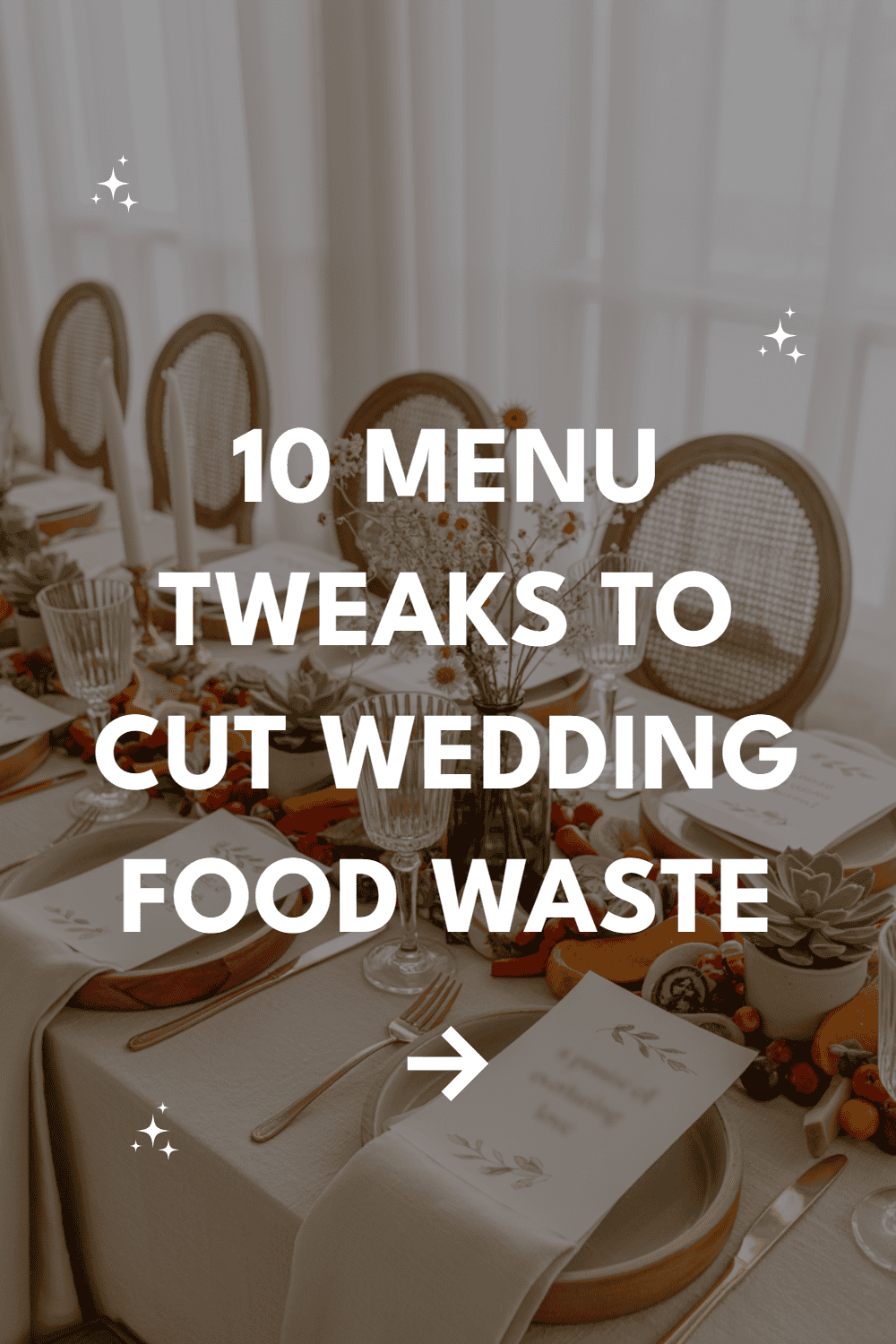Food waste at weddings is heartbreaking—and expensive. After spending months planning your perfect day and thousands on catering, watching untouched plates get scraped into garbage bins feels like watching money literally go down the drain.
The good news? Smart menu planning can slash waste without sacrificing guest satisfaction or your vision for the day.
1. Ditch the Plated Dinner Drama
Plated dinners look elegant in photos, but they’re waste factories in disguise. When guests can’t see their food before it arrives, you’re gambling on everyone’s appetite and dietary preferences.
That perfectly portioned salmon might look stunning, but if your vegetarian cousin gets it by mistake or your uncle who “doesn’t do fish” pushes it around his plate, it’s heading straight to the trash.
The rigid portions also mean guests can’t adjust based on their actual hunger levels.
2. Build Smart Buffet Stations
Buffets get a bad reputation for looking casual, but they’re actually waste-reduction powerhouses when done right. Guests take exactly what they want and can see everything before making decisions.
The key is strategic setup. Place the most filling items—rice, pasta, bread—at the beginning of the line. By the time guests reach the expensive proteins, they’ve already loaded up on cheaper sides and will naturally take smaller portions.
Skip the massive serving spoons that encourage oversized portions. Smaller utensils lead to more reasonable serving sizes without guests feeling restricted.
3. Embrace the Power of Passed Appetizers
Heavy hors d’oeuvres during cocktail hour can dramatically reduce dinner waste. When guests aren’t starving by the time they sit down, they make more thoughtful choices about their main course.
Plan for 6-8 pieces per person during a one-hour cocktail reception. This sounds like a lot, but it’s often cheaper than dealing with the waste from oversized dinner portions.
Choose substantial options like mini sliders, chicken skewers, or stuffed mushrooms rather than delicate canapés that disappear in one bite. Your guests should feel satisfied, not teased.
4. Master the Art of Menu Flexibility
Offering three entrée choices sounds guest-friendly, but it’s a logistical nightmare that often leads to waste. Caterers prepare based on estimates, and there’s always leftover chicken when more people choose beef than expected.
Consider a duo plate instead—smaller portions of two proteins on one plate. Everyone gets variety without the guesswork of separate counts.
If you’re set on choices, require guests to pre-select their meals with RSVPs. Yes, it’s more work upfront, but it eliminates the waste from overordering the unpopular option.
5. Rethink Traditional Wedding Portions
Wedding portions are notoriously oversized, based on the outdated assumption that bigger equals better hospitality. Most guests can’t finish a 10-ounce steak after cocktail hour appetizers and three courses.
Work with your caterer to reduce protein portions by 20-25% and bulk up with vegetables and grains instead. A 6-ounce piece of fish with roasted seasonal vegetables and wild rice pilaf looks abundant and costs less than an enormous protein with tiny sides.
This isn’t about skimping—it’s about creating balanced plates that guests actually want to finish.
6. Strategic Seasonal Menu Planning
Seasonal menus aren’t just trendy—they’re practical waste-reduction tools. When ingredients are at their peak, dishes taste better and guests are more likely to clean their plates.
Summer weddings benefit from lighter fare that won’t wilt under tent heat. Think grilled vegetables, fresh salads, and fruit-forward desserts instead of heavy braised meats that might go untouched.
Winter celebrations call for comfort foods that guests crave in cold weather. A butternut squash soup will disappear in December but might sit untouched at a July reception.
7. Dessert Strategy Beyond the Cake
Wedding cakes are beautiful, but they’re often the biggest waste culprit of the evening. After hours of eating and drinking, many guests skip dessert entirely.
Consider a dessert station with smaller, varied options instead of or alongside your cake. Mini tarts, chocolate-dipped strawberries, and bite-sized treats feel less overwhelming than a massive slice of cake.
If you’re attached to a traditional cake, keep it modest and supplement with lighter options like sorbet or fresh fruit. Guests appreciate having choices, especially after a heavy meal.
8. Beverage Waste Reduction Tactics
Open bars generate significant waste, especially when guests abandon half-finished drinks to try something new. Signature cocktails can help focus choices and reduce waste.
Offer 2-3 signature drinks alongside beer, wine, and basic spirits. When guests have interesting but limited cocktail options, they’re more likely to finish what they order.
Consider serving cocktails in smaller glasses. A 6-ounce signature drink feels substantial but reduces waste compared to 10-ounce mixed drinks that often go unfinished.
9. Late-Night Snack Wisdom
Late-night snacks are having a moment, but they need to be planned carefully to avoid adding to the waste pile. Guests are usually less hungry by this point, so smaller portions are key.
Choose foods that hold well and can be easily packed up if there are leftovers. Pizza, sliders, or a popcorn bar work better than elaborate setups that need to be served immediately.
Time these snacks strategically—about 2-3 hours after dinner service when guests have had time to digest and dance off their meal.
10. Plan Your Leftover Strategy
Even with perfect planning, some food will remain. Having a plan for leftovers prevents waste and can even become a sweet gesture for your guests or vendors.
Coordinate with your venue about packaging leftovers for your wedding party, vendors, or even local shelters if health codes permit. Some couples arrange for family members to take home containers for the next day’s brunch.
Consider your honeymoon plans when thinking about leftovers. If you’re leaving immediately, arrange for someone else to handle the coordination so nothing goes to waste.
Making It All Work Together
The best waste-reduction strategy combines several of these tactics rather than relying on just one change. A well-planned cocktail hour with strategic buffet placement and seasonal menu choices creates a comprehensive system that reduces waste naturally.
Start your planning by honestly assessing your guest list’s eating habits and preferences. A group of hearty eaters needs different planning than a crowd of light nibblers.
Work closely with your caterer throughout the process—they’ve seen what works and what doesn’t. Most experienced caterers appreciate couples who think strategically about waste because it makes their job easier too.
Your wedding should be a celebration, not a source of guilt about waste. With thoughtful planning, you can create a memorable dining experience that leaves guests satisfied and your conscience clear.


